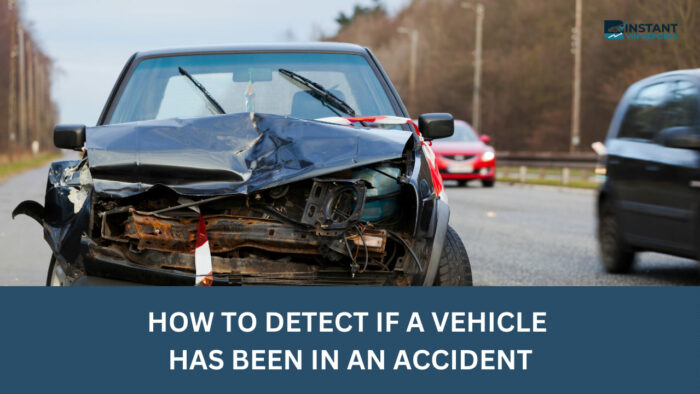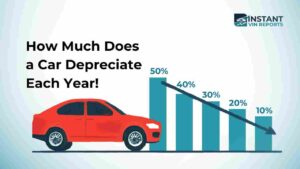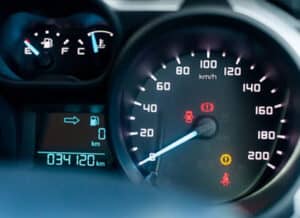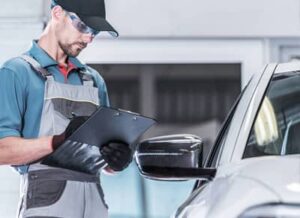If you are interested in purchasing a used car, it is important to verify the performance, dependability, and overall reliability of the vehicle. A consumer in the used car market only wants to purchase affordable vehicles in good condition. However, looks can be deceiving at dealerships, auctions, and online used car markets. This makes it even harder to identify damaged vehicles without the right tips. In this article, we will be discussing how to check for car accident damage and detect if a vehicle has been in an accident.
How to detect if a vehicle has been in an accident
A vehicle that has been damaged or has been in an accident may not be as reliable as consumers may want as it may have hidden defects and malfunctions. This is why it is essential to check for damaged cars before committing to any used car purchase at a dealership. There are two routes you can take to check for car accident damages. They are:
- Through a vehicle history report
- Through a mechanical inspection
Through a Vehicle History Report
A vehicle history report is a document that shows the records and history of a vehicle. It serves as a means to verify a vehicle’s reliability by providing accurate vehicle information to consumers. With a vehicle history report, you can be sure of the condition your vehicle is in—if it was stolen or if it’s a lemon. Some of the information provided to a consumer in a vehicle history report generated with the Instant VIN Report VIN check tool includes:
- Auction history with more than 10 photos
- Accident history
- Damage history
- Vehicle specifications
- Sales history
- Lien and loan records
- Theft records
- Title-brand records
- Accurate odometer records
- Service history
- Maintenance history
- Open recalls, and more.
When a consumer generates a vehicle history report with the Vehicle Identification Number (VIN) of the vehicles they are interested in, they are presented with a clear presentation of the vehicles and can make the best choices. The car accident and damage section of the report would clearly show all accidents a vehicle has been involved in and the extent of damages sustained.
ALSO READ: Common mistakes to avoid when buying a car in 2023
How to check damaged cars with a VIN check tool
The Instant VIN Reports VIN check tool is an easy-to-use tool that generates up-to-date information about vehicles through the VIN. To accurately check if a car has an accident history, simply follow these steps:
Step 1: Locate your Vehicle Identification Number (VIN)
The first step to checking for damaged cars is to locate your Vehicle Identification Number (VIN). The VIN is a 17-character code that is assigned to a vehicle during manufacture. The VIN serves as an identifier and can be used to verify a vehicle’s condition with the help of a VIN check tool. The VIN is easy to find and access through documents and vehicle parts. Some of the most common places where you can find a VIN on a vehicle include:
- The dashboard
- The driver’s side door jamb
- The engine block
- The certificate of title
- The registration documents, and more.
Be aware that classic vehicles may have VINs that are less than 17 characters in length (3 digits, 5 digits, 13 digits, etc.). In such cases, you don’t have to be confused, as they are still valid and can be used to check for damaged cars.
Step 2: Navigate to the Instant VIN Reports VIN check tool
After locating the VIN of your vehicle or the vehicle you are interested in, the next step is to navigate to the Instant VIN Reports VIN check tool. This tool provides easy access to vehicle information and can be utilized to accurately check for report accident of a car and damage records.
Step 3: Fill out the provided form with the requested information
The next step would be to fill out the form on the VIN check page. Make sure that your VIN is provided accurately and that there are no errors in the contact information provided.
Step 4: Generate a vehicle history report
After your VIN has been decoded, you will receive a preview page with your vehicle’s specifications. If your vehicle information has been confirmed, proceed to generate a vehicle history report and check if your vehicle has car accident and damage records.
A vehicle history report from Instant VIN Reports is the best choice to gain full access to accurate car accident and damage information. This information is collected from government agencies, car manufacturers, insurance companies, etc.
With a car accident and damage check, you can also identify potential defects that a vehicle’s mechanical or safety components may encounter in the future.
Through a mechanical inspection
A thorough mechanical inspection is another method of identifying car accident damages. To easily verify if a vehicle has been in an accident through a mechanical inspection, simply follow these steps:
Step 1: Look for cracks on the fender and bumper
To easily identify if your vehicle has sustained some form of car accident damage, closely examine the vehicle for cracks and any sign of damage. The fender and bumper of a vehicle are more likely to have collisions and receive damage in those areas, so keep an eye out for any signs. You can use your hand to feel these parts and identify any signs of non-uniformity to identify hidden damages.
Step 2: Look for any signs of replacement parts
Look out for signs that the vehicle has had some of its parts replaced. You can tell by taking a good look at the vehicle’s exterior and checking the lines to make sure they are straight. If the line by the sides of the car’s body is distorted and not straight, you should know that it could have been in some kind of accident or suffered damage that led to replacement.
ALSO READ: 10 Car Maintenance Tips That Can Prevent Major Repair Costs
Step 3: Take a look at the panel and door gaps
The distance between the panel and the door should not be significant and must be uniform across other vehicle doors. A damaged vehicle may not have this distance equal across the vehicle due to misalignment. If you notice any difference across the doors, be sure to note that it could be a car with an accident or damage record.
Step 4: Check for signs that the vehicle has been repainted
After an accident, repaired vehicles are often repainted. If you are observant enough, you should be able to spot signs of a different color paint, as it is not always easy to get the color right. With a window sticker from Instant VIN Reports, you can also determine the vehicle’s original color and compare it with what you can see on the car.
Step 5: Inspect underneath the car
The next step is to check for damage underneath the vehicle. Look out for rust and other damages on the underside of the vehicle you are interested in.
Step 6: Hire a professional mechanic
A professional mechanic can confirm if a vehicle has been in an accident or not. These mechanics often know what to look for in a pre-purchase inspection, and they should be able to inspect the exhaust systems, brakes, steering, suspension, and other important systems in the vehicle. They typically charge an affordable fee of $150-$200 to deliver the best inspections, and they will spot any sign of damage and report it immediately.
Overall, before purchasing a used vehicle, it is important to have a look at the vehicle’s records to see if there are any mismatches with the information provided by the dealer or private seller. You can easily get the right records with the Instant VIN Reports VIN check tool. After generating a vehicle condition report, it is also essential to have a professional mechanical inspection. This way, you will be sure of a vehicle’s accident and damage records and its overall condition.










